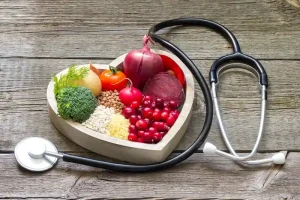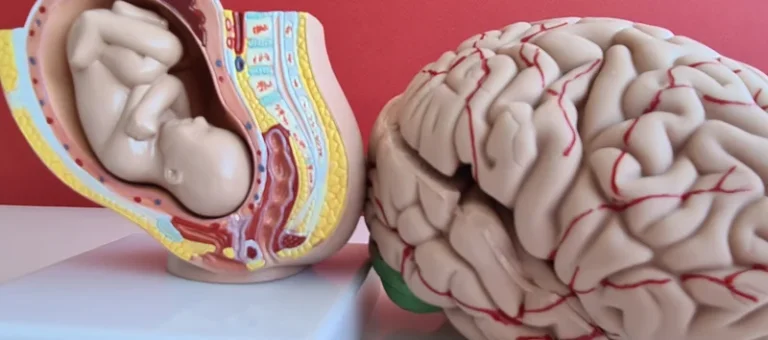
Teen drug abuse: Help your teen avoid drugs

MDMA (3,4-methylenedioxy-methamphetamine) was a synthetic drug used legally in psychotherapy treatment throughout the 1970s, despite the lack of data demonstrating its efficacy. Molly, or the phrase «molecular,» https://ecosoberhouse.com/ is typically utilized in powder form. Serotonin, dopamine, and norepinephrine are produced more significantly when MDMA is used. In the brain, these neurotransmitters affect mood, sleep, and appetite.
Smoking Addiction: Understanding Nicotine’s Grip and Breaking Free
The studies to date investigating the effects of co-use are summarized in Supplementary Table S5. Adolescence is characterized by a series of developmental changes occurring roughly between 10–19 years, with the timing of onset highly impacted by social, cultural, and nutritional influences (Spear, 2000). During this time, the body experiences increased production of gonadal steroids that contribute to growth and sexual development (Spear, 2000).
Protect Teens From Prescription Medications

While we addressed studies that highlighted neurobiological or cognitive factors antedate to substance use here, studies that did not account for underlying between-subject differences may contribute to discrepant findings. In the absence of controlled trials, longitudinal studies are more useful in inferring directional relationships between drug use and neurobiological consequences, especially when baseline measurements are carried out before the onset of substance use. Therefore, more longitudinal analyses, especially studies that are concerned with structural and functional differences within the brain, are needed. Prevalence of substance use and substance use disorder in adolescents.

Preventing Drug Misuse and Addiction: The Best Strategy
Thirty-five percent of adolescent decedents had documented opioid use history, and 14.1% had evidence of a previous overdose; 10.9% had evidence of substance use disorder treatment, and 3.3% had evidence of current treatment. Approximately 41% of decedents had documented mental health history, including mental health treatment (23.8%), diagnosed depression (19.1%), or suicidal or self-harm behaviors (14.8%) (Figure 2). A similar observation was made by Squeglia et al. (2015) in lateral frontal and temporal GMV in addition to attenuated white matter growth of the corpus callosum in heavy adolescent drinkers who were followed over eight years.
- Future studies looking into the effects of long-term prescription opioid use in adolescence on cognition are warranted.
- To tell us more about these findings, we are joined by NPR’s health correspondent Rhitu Chatterjee.
- Support for teens with drug addiction includes treating withdrawal or underlying mental health conditions, and addressing emotional needs, usually with a qualified mental health professional such as a psychiatrist or psychologist.
While the specific behaviors under each of the reviewed domains may differ between the drug classes (depending on the availability of research findings), this approach helps to contrast the similarities and differences between the different drugs. Although brain development continues well into adulthood (Spear, 2014), we limit this review to studies using adolescent sample populations with a mean age of 19-years-old or lower to capture the potential effects of drug use during the most dynamic stages of post-childhood development. This review comes at a time of recreational cannabis legalization and decriminalization by government bodies across the globe despite our somewhat incomplete understanding of its causal impacts on the developing brain alone, or in combination with other drugs commonly used by youth. Importantly, we also summarize the currently available findings surrounding the potential consequences of vaping, which has quickly become one of the most common methods of nicotine and cannabis delivery in youth, one that is still under-represented in the literature to date. Drug misuse is a widespread issue; in 2016, 5.6% of people aged 15 to 26 reported using drugs at least once [1]. Because alcohol and illegal drugs represent significant issues for public health and urgent care, children and adolescents frequently visit emergency rooms [2].

- It is well known that younger people take drugs more often than older adults for most drugs.
- Table Table11 discusses the short- and long-term effects of substance abuse.
- So if their friends use substances, your teen might feel like they need to as well.
- Addiction is a chronic brain disease characterized by compulsive engagement in rewarding stimuli, despite adverse consequences.
- Sudden weight loss or gain, bloodshot eyes, frequent nosebleeds, or unexplained bruises could all be indicators of substance abuse.
Since the physical and mental urge to use is so strong, it becomes very hard to stop using a substance. Here are some of the key statistics from the Monitoring the Future survey, which has been tracking youth substance use in the United States for over 40 years. When parents are angry or when teens are frustrated, it’s best to delay the talk.
Youth High-Risk Drug Use
Approximately 41% of decedents had evidence of mental health conditions or treatment. Seventy-five percent of Indian households contain at least one addict. The majority of them are fathers who act in this way due to boredom, stress from their jobs, emotional discomfort, problems with their families, or problems with their spouses. Due to exposure to such risky behaviors, children may try such intoxicants [45]. These behaviors need to be discouraged because they may affect the child’s academic performance, physical growth, etc. The youngster starts to feel depressed, lonely, agitated and disturbed.


Among discordant smoking sibling pairs, smokers were also more likely to have a lower IQ than their non-smoking counterparts. Mental health issues and co-occurring disorders often go hand-in-hand with addiction. Depression, anxiety, ADHD, and other mental health conditions can increase the risk of substance abuse. It’s like a chicken-and-egg situation – sometimes the mental health issues come first, sometimes the addiction does, and sometimes they develop together in a nasty feedback loop. Furthermore, the cross-sectional design of many studies reviewed here limits conclusions on causal directions as there is a possibility that observed neuroimaging and behavioral differences predate the onset of substance use.
This means that occasional or recreational users can be at risk of dying, says Sheila Vakharia, deputy director of the department of research and Academic engagement at the Drug policy Alliance. And they often end up buying counterfeit versions of these medications – fakes that look like the commonly used prescription medications – which have increasingly become contaminated with fentanyl in the past couple of years. «We’re still really in the early days in terms of teen overdose. And that makes this an especially important time to intervene,» he adds. Take a scientific journey to learn about the brain’s complex responses to specific drugs. Schools have the potential to reach millions of kids if they decide to talk to and teach students about the dangers of fentanyl. Ternan and his wife funneled their grief into action; they founded their nonprofit and partnered with social mediaplatforms to disseminate information about fentanyl.
Substance Abuse Screening
It’s important to remember that these signs don’t necessarily mean your teen is addicted. Adolescence is a tumultuous time, and many of these behaviors could be part of normal development. However, if you’re noticing multiple teen drug abuse red flags or drastic changes in your teen’s behavior, it’s worth taking a closer look. Sudden weight loss or gain, bloodshot eyes, frequent nosebleeds, or unexplained bruises could all be indicators of substance abuse.
